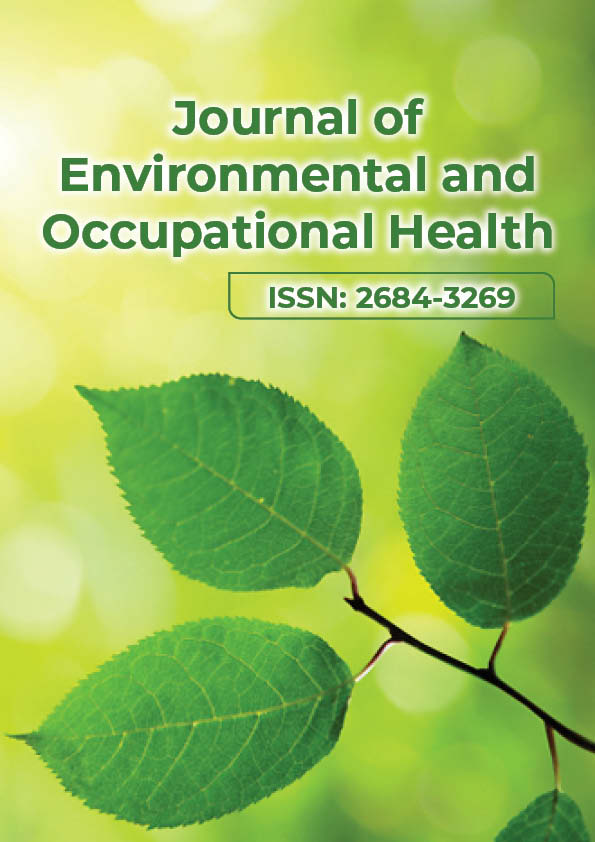Commentary - Journal of Environmental and Occupational Health (2023)
The Role of Ecosystems in Environmental Stability
Shahid Raza*Shahid Raza, Department of Earth and Environmental Sciences, Bahria University, Islamabad, Pakistan, Email: shahidraza@gmail.com
Received: 22-May-2023, Manuscript No. JENVOH-23-104535; Editor assigned: 25-May-2023, Pre QC No. JENVOH-23- 104535 (PQ); Reviewed: 09-Jun-2023, QC No. JENVOH-23-104535; Revised: 16-Jun-2023, Manuscript No. JENVOH-23-104535 (R); Published: 23-Jun-2023
Description
Ecosystems are intricate webs of living organisms and their interactions with the environment. They encompass diverse habitats, including forests, wetlands, coral reefs, and grasslands, which provide vital services to humanity. These intricate systems are the building blocks of a healthy environment and play a critical role in maintaining ecological balance. This article explores the significance of ecosystems, their components, and the intricate relationships within them. By understanding and protecting ecosystems, environmental harmony can be ensured for the sustainability of the planet for future generations.
Components of ecosystems
Ecosystems consist of biotic (living) and abiotic (non-living) components. Biotic elements encompass plants, animals, microorganisms, and humans, all interconnected through various ecological relationships. Producers, such as plants and algae, convert sunlight into energy through photosynthesis, forming the foundation of the food chain. Herbivores consume plant matter, while carnivores and omnivores feed on other animals. Decomposers, like bacteria and fungi, break down organic matter, recycling nutrients and maintaining soil fertility.;
Abiotic components include soil, water, air, and climate. These factors influence the distribution and adaptation of organisms within an ecosystem. For instance, temperature and rainfall patterns determine the type of vegetation in a region. Water bodies, such as rivers and lakes, provide habitats for aquatic species, while soil composition affects plant growth. The intricate interplay between biotic and abiotic factors creates a delicate balance essential for the survival of all organisms within an ecosystem.
Ecosystem Services
Ecosystems provide numerous services that are vital for human well-being. One of the most prominent is the provision of food. Agricultural systems rely on healthy ecosystems for pollination, pest control, and soil fertility. Forests supply timber, while marine ecosystems offer a source of fish and seafood. Maintaining the integrity of ecosystems is crucial for sustaining global food security. Ecosystems also play a pivotal role in regulating climate. Forests act as carbon sinks, absorbing greenhouse gases and mitigating climate change. Wetlands act as natural filters, purifying water and reducing the impact of floods. Mangroves and coastal habitats act as buffers against storm surges, protecting coastal communities. By conserving and restoring ecosystems, there is a chance to combat climate change and adapt to its effects. Biodiversity conservation is another significant ecosystem service. Ecosystems host a remarkable array of species, each contributing to the overall stability and resilience of the system. Biodiversity supports ecosystem functioning, including nutrient cycling, seed dispersal, and pest control. Protecting ecosystems helps safeguard this rich diversity of life and enhances the potential for scientific and medical discoveries. Cultural and recreational benefits are also derived from ecosystems. Natural landscapes offer aesthetic and spiritual experiences, promoting mental well-being. Ecotourism provides economic opportunities for local communities, encouraging the preservation of natural areas and their unique cultural heritage.
Threats to ecosystems
Despite their critical importance, ecosystems face numerous threats. Habitat destruction, primarily driven by human activities such as deforestation, urbanization, and industrialization, is a leading cause of ecosystem degradation. Loss of habitat disrupts ecological processes, threatens species survival, and reduces the capacity of ecosystems to provide vital services. Pollution, including air, water, and soil pollution, poses a significant threat to ecosystems. Chemical contaminants adversely affect the health of plants, animals, and humans, disrupting ecological balances and leading to long-term consequences. Climate change exacerbates these threats, altering temperature and precipitation patterns, causing habitat loss, and disrupting species distributions. Rising temperatures also increase the vulnerability of ecosystems to invasive species and diseases.
Ecosystems are the life-supporting infrastructure of the planet, providing essential services for human well-being. Understanding their components, functions, and interdependencies is crucial for safeguarding the environment and ensuring a sustainable future. By conserving and restoring ecosystems, the impacts of climate change can be mitigated preserving the biodiversity, and maintain the delicate balance necessary for the survival of all species. It is a responsibility to act as stewards of the Earth, recognizing the value of ecosystems and taking collective action to protect and restore them for the benefit of current and future generations.
Copyright: © 2023 The Authors. This is an open access article under the terms of the Creative Commons Attribution Non Commercial Share Alike 4.0 (https://creativecommons.org/licenses/by-nc-sa/4.0/). This is an open access article distributed under the terms of the Creative Commons Attribution License, which permits unrestricted use, distribution, and reproduction in any medium, provided the original work is properly cited.





